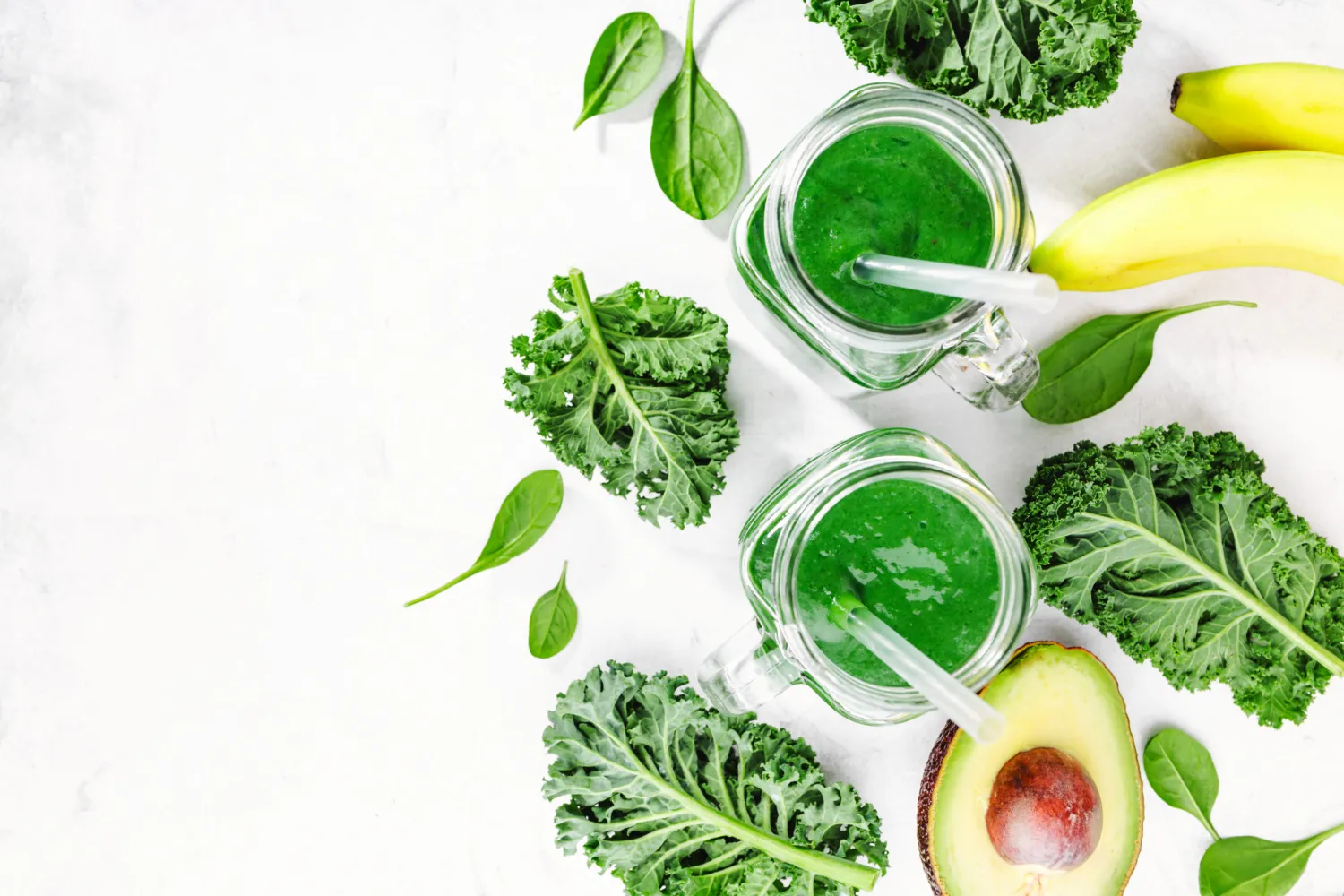For decades, the ketogenic diet was synonymous with rapid weight loss, but emerging research reveals its untapped potential for building lean muscle. Keto can fuel muscle growth without sacrificing metabolic flexibility. The secret? Strategic protein intake, targeted fat consumption, and resistance training.
Studies show that women on keto diets preserve muscle mass while burning fat, debunking the myth that carbs are non-negotiable for hypertrophy.
In this article, we’ll discuss the importance of nutrient timing and electrolyte balance and how it can help women of all ages use keto’s unique metabolic advantages to sculpt stronger, more resilient bodies.
Can Women Build Muscle on a Keto Diet?

How the Ketogenic Diet Affects Muscle Growth
The ketogenic diet shifts the body’s primary fuel source from glucose to ketones, which is why many believe you can’t build muscle while on this diet. On the contrary, it’s beneficial. Keto’s anti-inflammatory effects may indirectly support muscle recovery by reducing oxidative stress during workouts. The diet’s reliance on fatty acids for energy spares glycogen stores, allowing sustained performance in resistance training—a critical factor for triggering muscle adaptation.
Common Myths About Keto and Strength Training
A persistent myth suggests keto inevitably causes muscle wasting due to low insulin levels. In reality, insulin has an overstated role in muscle growth. Muscle protein synthesis is more dependent on adequate protein intake and mechanical tension from lifting.
Another misconception is that keto limits workout intensity. Though anaerobic performance may dip initially, research proves that your body will learn to adapt to using ketones.
Benefits of Keto for Muscle Building and Fat Loss
The diet is good for insulin sensitivity, helping your body shuttle protein-derived amino acids directly into muscle tissue. Its appetite-suppressing effects make calorie surpluses—necessary for muscle growth—easier to achieve without excessive fat gain. It’s also beneficial for perimenopausal women battling with age-related muscle loss.
Macronutrient Breakdown for Muscle Growth on Keto
This is where things can become challenging. Nailing your macronutrient ratios is non-negotiable if you want to build muscle while on the keto diet.
Unlike traditional high-carb diets, keto demands careful attention to protein and fat intake while keeping carbs low enough to maintain ketosis. Protein becomes even more important as your body needs it for muscle growth and recovery, as fat is your primary energy source. But at the same time, you still need carbohydrates, which you should strategically time to support intense training without knocking you out of ketosis.
The trick to sustaining this is to avoid extremes. Don’t eat too much of any of the macronutrients, but don’t eat too little.
How Much Protein Women Need to Build Muscle
A 2018 study recommends 1.6–2.2 grams of protein per kilogram of body weight daily for resistance training.
So, let’s say you weigh 68 kilograms or 150 pounds. This translates to roughly 109 to 150 grams a day. You might even want to eat more if you’re going through menopause. However, you should distribute your protein intake throughout the day, preferably eating only anywhere between 30 to 40 grams per meal.
Leucine-rich protein sources like turkey, eggs, or Greek yogurt directly activate muscle-building pathways. Plant-based options like hemp seeds or temper work best when paired with complementary proteins to cover all amino acids.
Adjusting Fats and Carbs for Optimal Performance
Fats should fill the energy gap left by carbohydrates, but not at the expense of protein. Prioritize nutrient-dense fats like olive oil, walnuts, or pasture-raised eggs, which provide omega-3s to reduce inflammation.
Again, you should still eat carbohydrates. You need to time them around your workouts to boost performance without disrupting ketosis. A good example is eating a small sweet potato before working out and eating another one after.
Don’t forget to make adjustments based on your hunger and progress. If your muscle gains start to stall, add more protein and eat fewer healthy fats.
The Role of Electrolytes and Hydration in Muscle Recovery
Electrolyte imbalances are common on keto and can derail all your progress. You can prevent this from happening by aiming to eat 5,000 mg of sedum, 3,500 mg of potassium, and 400 mg of magnesium a day. Otherwise, you risk cramps, fatigue, or what many refer to as “keto flu.”
A quick way to add sodium to your meals is to add salt and snack on avocado. Hydration matters too—dehydration thickens the blood, straining the heart during lifts. Experts found out in 2016 that keto-adapted athletes performed better when they prioritized electrolytes, experiencing better endurance and recovery times.
Best Keto Foods for Muscle Gain

Keto-friendly alternatives like fatty cuts of meat, fibrous vegetables, and high-quality fats fuel growth without breaking ketosis, replacing traditional carbohydrate sources. This is especially beneficial during your menopausal years, as these foods are often rich in omega-3 fatty acids.
If you’re on the younger side, you might want to focus more on iron-rich proteins to help offset your losses during your menstrual cycle.
The goal is to pair muscle-building nutrients with keto’s metabolic benefits, creating a sustainable approach to strength.
High-Quality Protein Sources on Keto
Animal-based proteins like chicken thighs, sardines, and bison provide complete amino acid profiles, including leucine, which directly triggers muscle synthesis. Sardines, for example, pack 23 grams of protein per 100-gram serving alongside anti-inflammatory omega-3s. Plant-based options like tempeh or lupin beans (a keto-friendly legume) work, too, though combining sources—like almond butter with hemp seeds—is the only way to cover all essential amino acids.
Healthy Fats That Support Muscle Growth
Fats, when on the ketogenic diet, are your fuel, but you have to choose the right sources.
Medium-chain triglycerides (MCTs) from coconut oil convert quickly into energy, ideal for pre-workout meals. Macadamia nuts, with their high monounsaturated fat content, support cellular repair and hormone production, which is key for managing hormonal fluctuations. Chia seeds soaked in almond milk offer a fiber-fat-protein trifecta, stabilizing blood sugar during cuts. Pasture-raised eggs provide choline for muscle contraction and nerve signaling. For cooking, you can choose avocado oil because of its high smoke point.
Low-Carb Vegetables for Nutrient Support
Cruciferous veggies like Brussels sprouts supply sulforaphane, a compound shown in studies to reduce oxidative stress post-workout. Zucchini noodles or spiralized daikon radishes offer meal volume, keeping calories in check while cutting. Mushrooms, particularly shiitake, contain ergothioneine, an antioxidant that protects muscle cells during intense training.
If you don’t have much time throughout the work week, prepare batches of pre-chopped frozen spinach on a Sunday and blend them into protein shakes or omelets when you need a quick breakfast smoothie.
Though slightly higher in carbs, Bell peppers deliver vitamin C to boost collagen formation for tendon health. Folate-rich asparagus is also great for an energy boost when you’re lifting weights.
Strength Training and Workout Strategies for Women on Keto
Without carbohydrates to spike glycogen, you might feel different working out. Just give it time. Your body will eventually adjust to using fat as a fuel source.
Let’s break down how to train smarter, not harder, while staying in ketosis.
Best Types of Resistance Training for Muscle Growth
Compound exercises like squats, deadlifts, and overhead presses should anchor your routine. These movements are better than isolation exercises, maximizing growth even when your carbohydrate intake is low. On keto, focus on moderate weights with higher reps (8–12 per set) to avoid overtaxing glycogen stores. For example, barbell hip thrusts target the glutes without requiring explosive energy.
For joint-friendly exercises, consider incorporating resistance bands into your workouts. And if you don’t feel like lifting heavy weights, you can try tempo training—slowing down the eccentric phase of a lift—to build strength.
How Often to Train for Optimal Results
Three to four weekly strength sessions strike a balance between growth and recovery. A 2019 study noted that training each muscle group twice weekly yields better hypertrophy than once-weekly sessions.
For instance, pair deadlifts and rows on Monday then squats and presses on Thursday. However, do adjust and give yourself more time to recover in your later years. Always make it a point to listen to your body. If you’re fatigued, swap a lifting for yoga or mobility work.
Morning workouts can leverage higher cortisol levels for intensity, while evening sessions benefit from accumulated protein intake. Consistency matters more than perfection, especially when adapting to keto, so do more of what works for you.
Balancing Cardio and Strength Workouts on Keto
Researchers in 2018 found that keto-adapted athletes preserved muscle mass better with low-intensity steady-state cardio(LISS) than high-intensity interval training (HIIT), which means that a brisk 30-minute walk done twice a week can do wonders for your muscle-building goals.
Just don’t forget to feed your muscles after working out. Refuel with a mix of protein and fats to aid recovery.
Common Mistakes Women Make When Building Muscle on Keto

Even with the best intentions, certain pitfalls can stall progress when combining keto and muscle growth. For example, hormonal fluctuations and social pressures around dieting can lead to missteps. Recognizing these mistakes early helps you stay on track.
Not Eating Enough Protein to Support Growth
Skimping on protein is a fast track to missed gains, especially on keto. Understandably, you don’t want to snap out of ketosis by eating too much protein, but it’s also a common misconception. Experts have found that protein intake up to 2.2 g/kg/day isn’t enough to disrupt ketosis.
Ideal sources of protein include chicken, spinach, salmon, asparagus, pumpkin seeds, edamame, and protein powder.
Overeating Fat Without Prioritizing Muscle Maintenance
Just because fats are your fuel source doesn’t mean you should overindulge. Just like with everything else, consume everything in moderation.
For best results, use fats to complement protein. For example, drizzle olive oil on grilled chicken or add avocado to a turkey salad. Remember that you need protein for muscle growth, not fat.
Ignoring Recovery and Sleep for Strength Gains
This study links poor sleep to reduced muscle protein synthesis. So, rest up. Make getting 7-9 hours of sleep a night priority. If it helps you, sip chamomile tea with magnesium citrate or take a warm bath with Epsom salts. Post-workout, pair protein with potassium-rich foods like avocado or spinach to replenish electrolytes. Even if you're busy, do 20 minutes of yoga to wind down and lower your cortisol levels.
Recap of Building Muscle on Keto for Women
Building muscle on a ketogenic diet is possible and empowering, but you should approach it with caution and intention. Aim for 1.6-2.2 grams per kilogram of body weight daily for muscle repair and to fight against age-related muscle loss. Also, do compound lifts, like squats and deadlifts, to maximize hypertrophy, and don’t forget to do low-intensity cardio to preserve muscle integrity. Finally, recovery is just as important as staying active. Getting enough sleep, drinking water, and taking electrolytes can help mitigate keto-related fatigue and support repair.
Do all these and avoid common pitfalls like undereating protein and overindulging fats. In time, you’ll enjoy the benefits of keto’s metabolic flexibility, using fat for fuel while building strength.
Sources
- Burén, Jonas, et al. "Effects of a Ketogenic Diet on Body Composition in Healthy, Young, Normal-Weight Women: A Randomized Controlled Feeding Trial." Nutrients, vol. 16, no. 13, 2023, p. 2030, https://doi.org/10.3390/nu16132030. Accessed 1 Mar. 2025.
- Ma, Sihui, and Katsuhiko Suzuki. "Keto-Adaptation and Endurance Exercise Capacity, Fatigue Recovery, and Exercise-Induced Muscle and Organ Damage Prevention: A Narrative Review." Sports, vol. 7, no. 2, 2019, p. 40, https://doi.org/10.3390/sports7020040. Accessed 1 Mar. 2025.
- Morton RW, Murphy KT, McKellar SR, et alA systematic review, meta-analysis and meta-regression of the effect of protein supplementation on resistance training-induced gains in muscle mass and strength in healthy adultsBritish Journal of Sports Medicine 2018;52:376-384.
- Volek, Jeff S., et al. "Metabolic Characteristics of Keto-adapted Ultra-endurance Runners." Metabolism, vol. 65, no. 3, 2016, pp. 100-110, https://doi.org/10.1016/j.metabol.2015.10.028. Accessed 1 Mar. 2025.
- Ruhee, Ruheea T., et al. "Protective Effects of Sulforaphane on Exercise-Induced Organ Damage via Inducing Antioxidant Defense Responses." Antioxidants, vol. 9, no. 2, 2020, p. 136, https://doi.org/10.3390/antiox9020136. Accessed 1 Mar. 2025.
- Schoenfeld, B.J., Ogborn, D. & Krieger, J.W. Effects of Resistance Training Frequency on Measures of Muscle Hypertrophy: A Systematic Review and Meta-Analysis. Sports Med 46, 1689–1697 (2016). https://doi.org/10.1007/s40279-016-0543-8
- Sherrier, Matthew, and Hongshuai Li. "The Impact of Keto-adaptation on Exercise Performance and the Role of Metabolic-regulating Cytokines." The American Journal of Clinical Nutrition, vol. 110, no. 3, 2019, pp. 562-573, https://doi.org/10.1093/ajcn/nqz145. Accessed 1 Mar. 2025.
- Valenzuela, Pedro L., et al. "Effects of Combining a Ketogenic Diet with Resistance Training on Body Composition, Strength, and Mechanical Power in Trained Individuals: A Narrative Review." Nutrients, vol. 13, no. 9, 2021, p. 3083, https://doi.org/10.3390/nu13093083. Accessed 1 Mar. 2025.
- Séverine Lamon, Aimee Morabito, Emily Arentson-Lantz, Olivia Knowles, Grace Elizabeth Vincent, Dominique Condo, Sarah Alexander, Andrew Garnham, Douglas Paddon-Jones, Brad Aisbett doi: https://doi.org/10.1101/2020.03.09.984666
FAQs
What types of exercises are most effective for muscle building on keto?
Strength training exercises, such as weightlifting, are most effective for building muscle on keto. Focus on compound movements like squats, deadlifts, and bench presses to engage multiple muscle groups and stimulate muscle growth.
Can I build muscle on keto without carbohydrates?
Yes, it is possible to build muscle on a ketogenic diet without high carbohydrate intake. The key is to maintain adequate protein levels and ensure your calorie intake supports muscle growth. Ketones can also provide an energy source for workouts.
How do I balance ketosis with muscle building?
To balance ketosis with muscle building, monitor your macronutrient intake closely. Ensure you consume enough fats and proteins while keeping your carbohydrate intake low. Use nutritional ketosis monitoring tools like ketone strips or blood ketone meters to stay on track.
How often should I adjust my keto diet when focusing on muscle building?
Regularly assess your dietary needs every 4-6 weeks as your body adapts and your muscle mass increases. Adjustments may include increasing protein intake or recalibrating your fat-to-protein ratio to ensure you're fueling muscle growth effectively while staying in ketosis.
What role does meal timing play in muscle growth on a ketogenic diet?
Aim for a meal or shake containing high-quality protein within 30 minutes to 2 hours after your training session to take advantage of the anabolic window.















